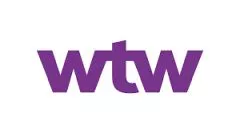Effective leaders reassess current approaches to people and risk management to ensure they can navigate today's geopolitical, technological and economic challenges rather than being steered by them.
For the fifth year in a row, business leaders are entering a new year anticipating material change around the world, with early days already demonstrating volatility. Effective leaders have become adept at managing risks and adapting to new circumstances. The following include trends they are tracking and acting on this year:
- Geopolitical change will continue, and new risks will
arise even as current risks are addressed. Events once
thought rare are occurring more often and at scales previously
unseen, impacting business strategy and operations in complex and
nonlinear ways that vary by country and sector. The recent WTW Emerging Risk Survey suggests the complex
risk landscape isn't slowing down, reflecting a period with the
earliest Category 5 storm on record (Beryl), a global technology
outage (CrowdStrike), continuing conflict in Ukraine
and the Middle East, increased tensions in Taiwan and North Korea,
the Baltimore bridge collapse, significant labor strikes, a
high-profile CEO assassination and what The Economist dubbed "The Biggest
Election Year in History."
Business risks in 2025 include ongoing climate threats (fires, floods and severe weather already experienced in the year's first week), pivots in rules and regulations, trade conditions and tariffs, financial investment flows, market shifts, property peril, gray zone attacks, shipping and global supply chains, infrastructure, cyberattacks, disinformation campaigns, commodity prices, inflation, and employee and executive security. Effective leaders reassess current approaches to ensure they can navigate today's operating environment rather than being steered by it. They mitigate risks where possible, change plans where necessary and prepare teams to act quickly and decisively when needed. - AI and new tech development will outpace adoption yet
show additional limitations and risks (increasing the automation
paradox). Generative AI and other new technologies
continue to surprise users and leaders in what it can and can't
do. During the recent U.K. elections, an AI avatar named Steve ran for parliament.
Generative AI robotics are advancing more quickly than many
predicted, as are effective multimodal and reasoning models.
Microsoft and OpenAI continue to make progress. Apple and Meta are
making strides with virtual reality and spatial computing. Google
announced a quantum computing breakthrough with Willow.
Nevertheless, AI development has setbacks, including those related to accessibility (many AI coworking applications perform below expectations), impostors (the ability to use technology doesn't keep up with developments), and capacities and capabilities (data, skills and deployment abilities haven't kept up with the technology). Changing regulations, new lawsuits, and omnipresent cyber breaches confirm it's early days for governance of technology and its usage at governmental and corporate levels. Effective leaders shift from relying on traditional risk management and governance protocols to using more dynamic governance models. They also become more realistic about the pace and impact of technology adoption on customers, employees and performance, and recalibrate expectations and commitments. - Labor markets, inflation, work arrangements and talent
shortages remain in the news. Many business leaders
anticipate that labor markets, inflation, work arrangements and
talent shortages will stabilize by the mid-2020s. While economic
elements of these topics have improved over the prior year in most
developed economies, many leaders are concerned they became less
favorable in recent months in key markets (e.g., the U.K., the Eurozone, the U.S. and Canada) and could worsen in 2025.
When it comes to labor markets, permanent demographic shifts, including a baby bust, create long-term talent shortages for certain jobs and skills that could persist for years. Return to offices remains in the news globally, with real estate and job data showing material differences in work practices across regions, countries and even cities. Recent WTW research shows flexible work trends shifting gradually, as almost two-thirds of U.S. companies (61%) have implemented formal policies that require onsite attendance for a minimum number of days per week. More companies also onshore and near-shore to address geopolitical, supply chain and talent availability issues. Effective leaders continue to monitor conditions closely and implement new talent strategies as boards and senior management teams increase focus on culture, employee experience and the transformation of pay, benefits and career programs to drive performance in a changing environment. - People risks are at the forefront. A recent survey finds that board members view human capital as a high-priority topic. The most recent WTW Global Directors' and Officers' Survey reports boards and executives see employee health and safety as a top organizational risk. Companies with higher levels of employee wellbeing outperform their peers. Human capital governance has become a core element of enterprise risk management frameworks in a growing number of organizations.
Effective leaders hold holistic and strategic human capital discussions and consider human capital metrics in the context of performance, productivity and risk. Topics include developments in labor markets, skill shortages, succession planning, retention, compensation and benefit programs, employee wellbeing (financial, physical, emotional, social) and costs. Effective leaders view these efforts to represent a material component of effective business leadership as well as being aligned with company strategy and creating competitive advantage and driving performance.
Many of 2024's challenges will continue through this year. Effective leaders reassess their strategies to manage geopolitical shifts, developments in AI and new technologies, and the persistent issues in labor markets and inflation. By integrating human capital metrics into their risk management frameworks and fostering a resilient, adaptable workforce, these leaders mitigate risks while seeking opportunities. Embracing a holistic approach to these multifaceted risks is crucial for driving performance and a competitive edge.
A version of this article originally appeared on Forbes on January 10, 2025.
The content of this article is intended to provide a general guide to the subject matter. Specialist advice should be sought about your specific circumstances.


